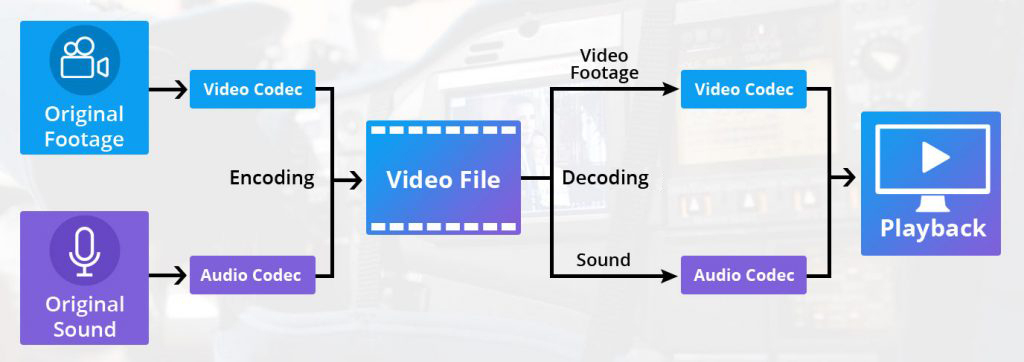We’ve all watched a video at some point, right? If you have, then you’ve made use of a video codec in some form or another. ‘Codec’ is an abbreviation of compression-decompression. In a nutshell, it is a standard for transmitting or storing media.
Let’s say you want to stream a movie from Netflix. When you click play on your chosen movie, you aren’t downloading the footage just as it was on the cameras that shot it. The files that movie cameras make when they record are massive. You’d need a much faster internet connection than is currently available to stream it as seamlessly as Netflix works (most of the time).
That’s why we have standards that use compression. Compression takes the raw file, removes the parts that aren’t too important, using maths, and voila, you have a much smaller video that looks almost the same as the original. Some of these compression standards you might have heard of before, like AVI, H.264/AVC or H.265/HEVC (High-Efficiency Video Coding).
Videos, but half the size thanks to H.266
Soon there might be a new kid on the block. The people in charge of this kinda thing at the Joint Video Experts Team have come up with the next standard called H.266/VVC (Versatile Video Codec).
These days, we’re seeing a lot more smartphones capable of capturing 4K video. All that video needs to be stored somewhere. 1 minute of 4K video shot at 60fps using the H.265 codec is around 400MB, so the average YouTube video length of 11.7 minutes takes up around 4.7GB. If you want to send it somewhere, that can take a long time.
With the H.266 codec, early tests show it to be roughly 40%-50% more efficient at compression than H.256. Other than smaller file sizes, H.266 can support 360-degree videos, handy for VR and AR uses.
As with any change of popular standard, it’ll take a bit of time before it sees widespread adoption. To put it into perspective, H.256/HEVC was released in 2013 but was only supported in iPhones starting in 2017. Things are moving a bit faster now but don’t hold your breath. H.266/VVC will be along eventually, but it may just take some time to get here.
Source: The Next Web




